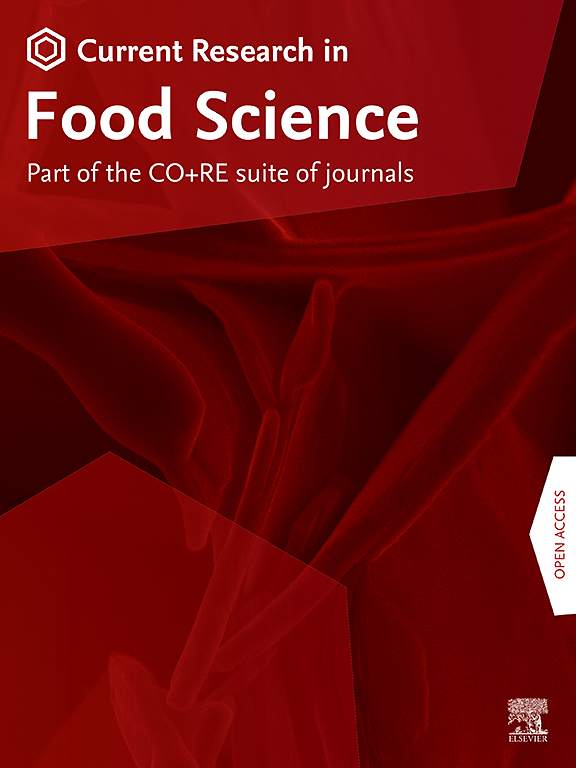Bigels containing different wax-based oleogels as laminating fat replacers in croissants
IF 6.2
2区 农林科学
Q1 FOOD SCIENCE & TECHNOLOGY
引用次数: 0
Abstract
In this study, bigels were developed to mimic the characteristics of traditional laminating fats, butter and margarine, in croissants. The bigels consist of 80 % oleogel (canola oil, wax and monoacylglyceride) and 20 % hydrogel (water and xanthan gum). Beeswax (BW), carnauba wax (CBW), candelilla wax (CLW), and rice bran wax (RBW) were evaluated as oleogelators at concentrations between 12 and 20 % w/w in the oleogel. The effects of wax concentration, temperature, and mechanical work (plasticizing) on texture, solid fat content, and microstructure of the bigels were investigated.
Bigels’ solid fat content and mechanical properties were less temperature sensitive than controls, but mechanical work (plasticizing) had detrimental effects on their texture. Differences in bigel firmness between waxes at the same concentration could be attributed to different wax crystal structures. Plasticized bigels most similar in texture to the controls were those with 18 % BW, 14 % CBW, 14 % CLW, and 20 % RBW. These bigels were tested as laminating fats in croissants at 100 % replacement levels. After lamination, the croissant doughs with bigels exhibited irregular fat layering, resulting in more dense and less airy croissant pore structure. While bigel croissants possessed a comparable volume, they were generally flatter and wider compared to croissants with control fats. In terms of texture, bigel croissants displayed a lower degree of staling, but had overall higher firmness. Furthermore, they had similar springiness and cohesiveness, but increased chewiness. With respect to nutritional value, croissant made with bigels contained significantly less saturated fatty acids.

求助全文
约1分钟内获得全文
求助全文
来源期刊

Current Research in Food Science
Agricultural and Biological Sciences-Food Science
CiteScore
7.40
自引率
3.20%
发文量
232
审稿时长
84 days
期刊介绍:
Current Research in Food Science is an international peer-reviewed journal dedicated to advancing the breadth of knowledge in the field of food science. It serves as a platform for publishing original research articles and short communications that encompass a wide array of topics, including food chemistry, physics, microbiology, nutrition, nutraceuticals, process and package engineering, materials science, food sustainability, and food security. By covering these diverse areas, the journal aims to provide a comprehensive source of the latest scientific findings and technological advancements that are shaping the future of the food industry. The journal's scope is designed to address the multidisciplinary nature of food science, reflecting its commitment to promoting innovation and ensuring the safety and quality of the food supply.
 求助内容:
求助内容: 应助结果提醒方式:
应助结果提醒方式:


